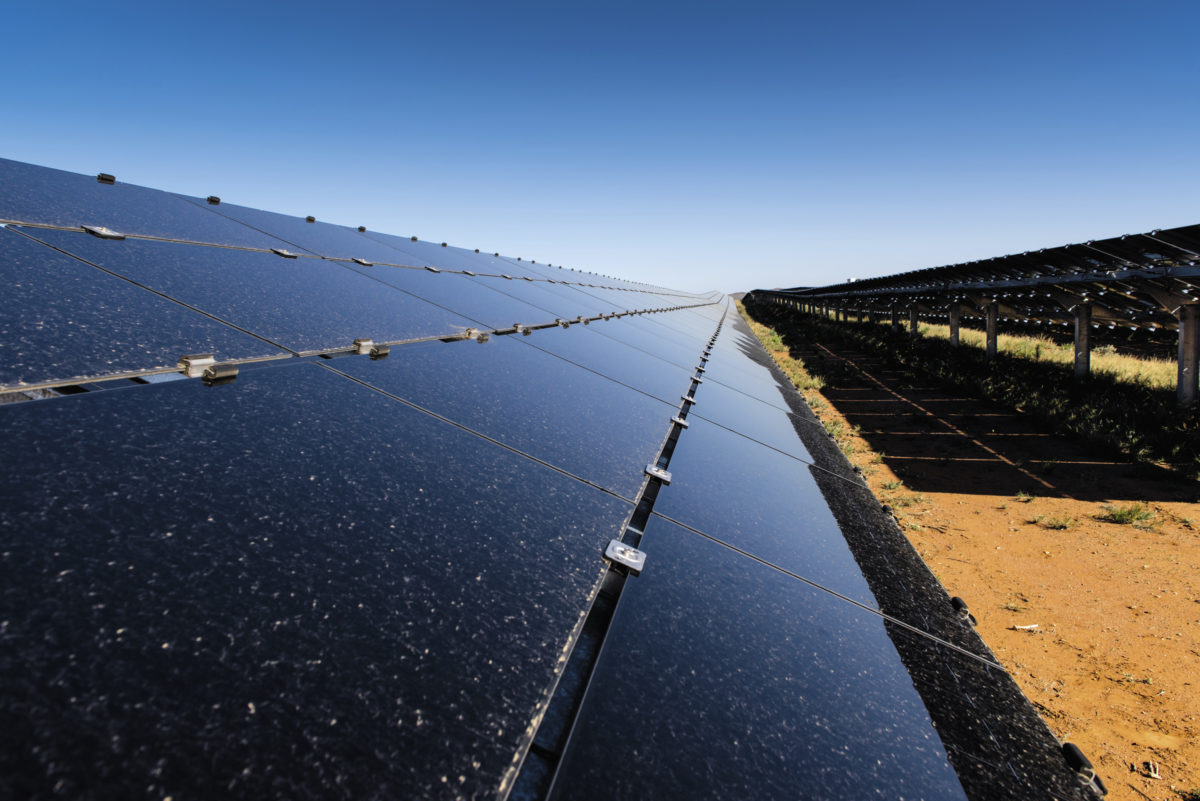Image: NREL/Dennis Schroeder
U.S. solar industry passes 100 GW of installed capacity, SEIA report says
Jun 18, 2021 9:15:00 AM / by David Wagman, pv magazine posted in Solar Development, Commercial Solar Finance, Residential Solar, Commercial Solar, Solar Finance, United States, Markets, Finance, Industrial Solar, Residential PV, Utility Scale Markets, Green Finance, Solar assets
Puerto Rico Energy Resilience
Apr 14, 2021 9:00:00 AM / by Paul Fischer posted in Renewable Energy, Solar Energy, Solar, Solar Development, Residential Solar, Solar Finance, Policy, Utilities, Markets, Business, Puerto Rico, Distributed Storage, Rooftop Solar, Microgrids, Solar Incentives, Climate Plan, Investments, Climate Change, Solar Panels, Energy Generation, Opinion & Analysis, Industrial Solar, Technology, Residential PV, Breiter Planet Properties, Utility Scale Markets, Batteries, Solar Rooftop, Renewables, Blackouts, Battery
U.S. solar industry comes ‘roaring back,’ breaks multiple records in 2020
Mar 18, 2021 9:30:00 AM / by Joe Bebon, pv magazine posted in Policy, United States, Markets, Utility-Scale PV, Community Solar, Residential PV, Industrial PV, Commercial PV, Utility Scale Markets, Clean Energy, Markets & Policy
Image: NREL/Dennis Schroeder
Covid-19 weekly round-up: It is still unclear how the crisis will play out on various solar segments, although one US installer says business has never been better…
Jun 29, 2020 9:30:00 AM / by Max Hall, pv magazine posted in Policy, United States, Energy Storage, Markets, Utility-Scale PV, Finance, Distributed Storage, India, Germany, Europe, China, Distributed Solar, World, utility scale storage, Australia, Residential PV, Industrial PV, Commercial PV, Covid-19, Illinois, Markets & Policy, Modules & Upstream Manufacturing
Solar panels are going cheap at the moment. You might want to take advantage before the great Covid-19 sale comes to an end.
New Jersey calls for 14 GW more solar through 2035
Apr 6, 2020 9:00:00 AM / by William Driscoll, pv magazine posted in Policy, Markets, Utility-Scale PV, NREL, Decarbonize, Fossil Fuels, New Jersey, Decarbonization, Electric Vehicles, Climate Change, Global Warming, Residential PV, Electrification, Sustainability, Industrial PV, Commercial PV, Industry
New Jersey Governor Phil Murphy
The good news: The US added 13.3 GW of solar in 2019, beating wind and gas in new capacity
Mar 23, 2020 9:30:00 AM / by Eric Wesoff, pv magazine posted in Community, Policy, United States, Markets, Utility-Scale PV, Finance, Installations, Residential PV, Industrial PV, Commercial PV, Utility Scale Markets, Covid-19, Resilience
The good news is that 2019 was a remarkable year for solar in the U.S.
The bad news is, well, you know what the bad news is.
Wood Mackenzie and SEIA put out their 2019 U.S. Solar Market Insight, but the report doesn’t/can’t account for the impact of the coronavirus outbreak on the solar industry in 2020 and its supply chains, component costs and project timelines.
Here are five takeaways from the pre-COVID-19 U.S. solar industry.
- The U.S. solar industry installed 13.3 GW of PV last year, 23% more than in 2018.
- The U.S. added more than 2.8 GW of residential solar in 2019.
- Cumulative operating photovoltaic capacity in the U.S. now exceeds 76 GW, up from 1 GW at the end of 2009.
- Solar accounted for nearly 40% of all new electricity generating capacity added in the U.S. in 2019
- The contracted utility PV pipeline is a record high 48.1 GW.
Before the COVID-19 outbreak, WoodMac had forecast 47% annual growth for solar this year, with nearly 20 GW of installations expected for a record annual figure. No one would think that forecast likely any more.
SEIA chief executive Abigail Ross Hopper cited the PV industry’s resilience in the face of Section 201 solar import tariffs as a source of hope.
“We know anecdotally that the COVID-19 pandemic is affecting delivery schedules and our ability to meet project completion deadlines, based partly on new labor shortages,” said Hopper. “This once again is testing our industry’s resilience but we believe over the long run we are well positioned to out-compete incumbent generators in the Solar+ decade and to continue growing our market share.”
Pennsylvania solar advocates call for 6 GW by 2025
Mar 16, 2020 9:15:00 AM / by William Driscoll, pv magazine posted in Policy, Markets, Industrial Solar, Residential PV, Sustainability, Industrial PV, Commercial PV, Pennsylvania
Pennsylvania’s solar trade association, PASEIA, is calling for the state to reach 6 GW of in-state solar power by 2025, including almost 2 GW of distributed solar.
Northeast US added 800 MW of rooftop solar in 2019
Mar 9, 2020 8:45:00 AM / by William Driscoll, pv magazine posted in Solar Access to All, Massachusetts, Policy, Vermont, Markets, Connecticut, Maine, New Hampshire, New York, Rhode Island, Installations, Solar Incentives, New Jersey, Greenhouse Gas Emissions, Infrastructure, Climate Change, Residential PV, Industrial PV, Commercial PV, Pennsylvania
Image: Adam Stein, Solar States
2,000 gigawatts of solar power needed for 100% renewables
Jan 28, 2020 9:30:00 AM / by William Driscoll, pv magazine posted in Commercial Solar, Policy, United States, Energy Storage, Markets, Utility-Scale PV, Finance, Installations, Decarbonize, Decarbonization, Paris Climate Agreement, Climate Change, Industrial Solar, Global Warming, Residential PV, Electrification









